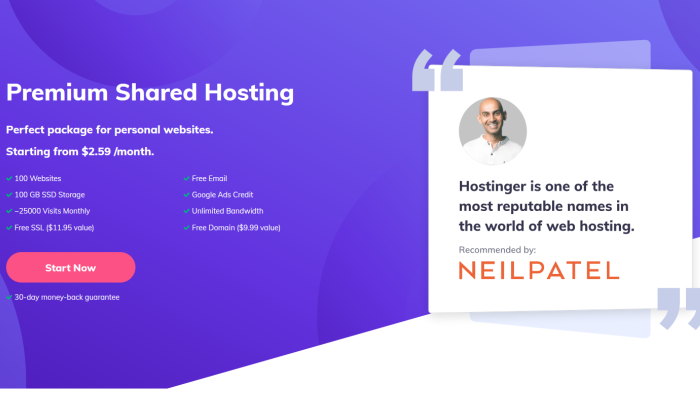15 Easy (And Free) Ways to Promote Your Website in 2022
At the risk of sounding like a salesman, let me tell you that not only do these marketing tactics exist, but they’re also actually some of the most effective ones. We’ve been using them, other marketers use them, and...

Shows how many different websites are linking to this piece of content. As a general rule, the more websites link to you, the higher you rank in Google.
Shows estimated monthly search traffic to this article according to Ahrefs data. The actual search traffic (as reported in Google Analytics) is usually 3-5 times bigger.
The number of times this article was shared on Twitter.
Free and effective promotion tactics? Yeah, right. At the risk of sounding like a salesman, let me tell you that not only do these marketing tactics exist, but they’re also actually some of the most effective ones. We’ve been using them, other marketers use them, and most of the big websites I’ve seen to date use them. But that’s not all. You don’t need a degree in marketing or to be a marketing pro to start promoting your website for free and get results. Here are 15 ideas that go into the free, easy, and effective basket. If you’re unfamiliar with SEO, it stands for search engine optimization, and it allows you to get free traffic from search engines like Google. One of the fundaments of the SEO process is to choose the right keywords to create content for. Now, a tried and tested tactic for new websites and websites without a strong backlink profile is to choose keywords with low ranking difficulty. You can spot those keywords by mainly looking at two things: Here’s how you can do it using Ahrefs’ Keywords Explorer. You can: Single low-competition keywords may not offer as much traffic potential. But if you pile up a number of pages targeting these keywords, you can end up with serious organic search traffic. Also, low-competition keywords may convert better than their more generic counterparts if they are specific enough. One of the neat tricks to find keywords that can possibly convert to sales is to check the CPC ad cost to see if people bid for those keywords. So what to do with difficult keywords? Of course, you may target them any time you wish, but note that they will probably take more time (and backlinks) to rank. Recommendation You may also want to try out zero–search volume keywords, as they are usually low-competition too. This article will introduce you to the subject and show you the steps. Do note that this tactic doesn’t always bring results and can be a bit more complicated than what you’ve read above. Also, it may be more suitable for some areas (B2B, emerging technologies) than others. Sometimes, you don’t need to create new content to get more traffic. Your old content may just need some SEO work, including: At Ahrefs, we do these things to get more traffic regularly. With multiple successes. You can follow our step-by-step process with this guide: Republishing Content: How to Update Old Blog Posts for SEO This tactic is all about creating valuable, unique content that’s ideally centered around your brand or product—then offering free access to the content. Whether it’s a printable PDF guide or a tutorial series on YouTube, focus on adding value for your audience. You’ll then start seeing the magic of word of mouth at work. But first, you need a proven topic for your free resource. You can find inspiration for topics manually by visiting social media profiles of authors and magazines in your niche and looking at the engagement signals: likes, retweets, comments, etc. Additionally, you can browse through online communities and see what resonates with your target audience. But there are also tools that can help you with this job. One tool we recommend quite often for any kind of audience research is SparkToro. Just plug in topics your target audience frequently talks about to discover related topics and hashtags (among many other things). And with an all-in-one SEO toolset like Ahrefs, you can broaden your options with keyword research. And on top of that, you can reverse engineer what worked for your competitors. Recommendation Consider creating content tailored to platforms with native distribution mechanisms. For example, you can create a course on a site like Udemy on how to, say, paint Warhammer miniatures and mention that you own a website on the topic with more cool resources. Look for other businesses that target a similar audience but do not compete with you directly. Then see if they are up for a content collaboration with you. This way, you can pitch to their audience, and they get to pitch to yours. Here’s an example: In 2018, we worked with Buffer, a social media scheduling tool, to create a webinar titled “How to Get Website Traffic With Evergreen Content and Social Media Marketing.” While the audience was comprised of digital marketers, our products are different enough and do not compete with each other. Repurposing content is about using existing content and “repacking” it for other marketing channels. For example, you can chop a larger article into smaller pieces and use them to promote the original piece via guest blogging. Actually, it’s such a common technique that it has its own name: the “Splintering Technique.” Or you can turn an article into a video and take advantage of YouTube’s search engine and content recommendation algorithms. Or you can take an entire post, strip it down to a tl;dr version, and publish it on Reddit. There are other ways to take advantage of this tactic. Check out our complete guide to content repurposing, where we share nine ideas for that. How can you promote your website while writing for others? When you publish content for other websites, a number of things happen: Apart from preparing a pitch that stands out from the crowd, the key is to find the right places to publish. For this, you can use Google with search operators. Then you need to vet each page manually. Try our free website authority checker for that last part. With an Ahrefs sub and our SEO Toolbar, you can also vet the websites right inside the SERPs. Or use our Content Explorer to get additional insight to filter for results that meet specific performance criteria. Content syndication is a similar tactic to guest blogging. The only difference is that with content syndication, you publish the same thing in multiple places. Getting started with content syndication is practically the same as guest blogging. You need: With syndication comes the option to self-syndicate. So unlike guest blogging, you can self-populate your articles to other platforms like Medium, Reddit, or LinkedIn. These platforms have a large audience and their own distribution mechanism, so you can get in front of people’s eyes for free. Recommendation Use a backlink checking tool to see where authors of your choice syndicate their content. In Ahrefs, go to Backlinks report, set the word or phrase filter to “Anchor with surrounding text,” and type “originally appeared on” inside the input field. Social media platforms, including online communities, are places where you can likely find your target audience. You just need to figure out where exactly and how you can provide unique value to them. If you have something important to say, there will be plenty of opportunities to link to your website. Start by learning more about your audience. Again, for this, I’ll recommend SparkToro. Another way to find places that mention topics related to your website (or even your website) is to use a web monitoring tool like Google Alerts or our very own Ahrefs Alerts. Once you’ve zeroed in on your communities, you may want to approach them with these universal tips in mind: Recommendation You shouldn’t always expect referral traffic from your social posts. Two reasons: Case in point. Have you heard about Miss Excel? Her software training business can generate up to six figures per day. Not per month, per day. Even Google Docs tried to correct me on that. Miss Excel gets customers through social media. But you can rarely come across a direct link to her course in any of her posts. Instead, she directly shares Excel tips on TikTok and Instagram. Here’s a great interview on how she does what she does. And how about creating your own community? It may work if: Going further, we can see there are multiple benefits of having a community tied to your website. In terms of promotional aspects, the biggest benefit will likely be word of mouth. Word of mouth is one of the most effective marketing channels. It will start working organically when community members feel like the value inside the community will benefit others. But you can potentially influence word of mouth by giving people a reason to talk, such as a new study you just published. This way, a community can naturally start to attract members and, as a result, promote your website. Just keep in mind that you shouldn’t expect overnight success with this tactic. Treat it, rather, as a long-term investment with dividends paid as you go. Here’s why email marketing has been utilized by so many marketers: It allows them to build an audience and communicate with them directly and regularly. For free. An email marketing list like that can become one of your most valuable assets. Of course, building an email list is not that easy. But if email marketing is done in tandem with quality content marketing, a setup like that puts the process of list-building almost on autopilot. All you need to do is to put up a sign-up form next to your content. Before you run off and start looking for the best email app, do make sure you’re on the right track: If you’re a local business owner, getting listed in local directories is a must. This is because people look for local services on the web all of the time. For this, they use either local service directories or simply plug in a keyword like “lawyer near me” in Google. In the latter case, Google will usually point them to a local directory. Creating or claiming your Google Business Profile is a good starting point. Setting up the profile is quite straightforward (and free). However, what I recommend here is going a step further and making sure your profile is optimized. Here’s how to do it in 30 minutes. Completing this step will make your business profile (hence, your website) eligible to show up in Google Map Pack (the search result with a map, as seen in the picture above), Google Maps, and a local knowledge panel when someone looks for your brand. Next, add your business to relevant local directories. For example, a lawyer may want to list their service for free with Thervo.com. Just make sure to keep all information consistent across platforms. Once you’re done with adding your business to directories, check out our guide on local SEO to take things a notch higher. Among other things, this guide will show you tactics that can improve your position in the local map pack and how to create content for keywords with local search intent. Outreach done for link building purposes is a tactic where you get your content in front of bloggers and influencers in your industry. The aim is to get them to talk about you and link to you. This tactic is mainly utilized to boost the “authority” of your pages in the eyes of Google so that these pages rank higher and bring more search traffic. In its simplest form, outreach is the act of reaching out and asking for a link back to your website. And yet, great outreach at scale is a lot more than just asking for a backlink. The process involves: Sounds easy, right? But there are actually a lot of details involved that can make or break the process. Also, steps like finding prospects or finding the correct emails are too tedious or even impossible without the right tools. The best way to go about your outreach process is to pick up a tried and tested process you can simply follow to a T. Here’s one from us, completely free: Recommendation Some backlinks will have a greater impact on your webpages than others. Learn what makes a good backlink. Digital PR (public relations) can do such an amazing thing: carrying your message to your audience for you. Promoting your website through digital PR includes: All of the above tactics allow you to benefit in three ways: Here are two free tools from Ahrefs that can help you with your digital PR efforts. The first one is our aforementioned free website authority checker. Thanks to it, you will be able to quickly see the authority of the website. The second one is our Ahrefs Webmaster Tools. You can use it as a free way to monitor backlinks from your PR efforts. Chances are that there is a newsletter in your niche that regularly curates content found on the web. And chances are, if your content is good enough, it can be featured in one of those newsletters. Naturally, a link inside a newsletter won’t count for SEO. But it can lead to links from authors reading that newsletter. And in any case, you’re putting your name on the map and making the newsletter’s subscribers aware of you. What you need to do here is to find relevant newsletters and show your work in a well-thought-out outreach pitch: Two words of advice: The web is full of rankings and reviews. Chances are that some of them are related to what you do. Getting featured (and linked) is a free way to get some direct referral traffic, boost your SEO, and increase your brand awareness. If you’re just starting out, you may want to build some authority before you send your first pitch. Keep in mind that editors will screen your website by a number of different criteria—from website design, social media following, to even personally testing your products, recipes, strategies, and whatever you offer. Also, they may be actual experts on the topic. So what may help you here is segmenting your outreach prospects based on the authority of the website you’re targeting. What you’ll do then is to start from smaller websites and move your way up. The backlink profile of a website can be a useful, quick proxy for this, so you can use Ahrefs’ Site Audit or the free website authority checker if you don’t own a subscription. At all times, check your targets manually. This will help you personalize your pitch and potentially discover additional opportunities, such as a special section for “rising stars.” Another tip here is to focus on webpages that rank very specific types of websites. They can be easier to reach out to since more niche topics tend to have smaller audiences. So for example, if you’re running a blog that focuses on low FODMAP cooking, look for that kind of opportunity instead of “best food blogs.” These aren’t the only possible ways to promote your website for free. I do encourage you to experiment and double down on what works. If you think something may work for your audience (and even if it hasn’t been tried before), go for it. But make sure to measure the results. Keep in mind that your marketing tactics don’t need to be truly unique to be effective. One of the best places to find promotion ideas will always be your competition and other successful businesses—even if they operate in a different industry. Got questions? Ping me on Twitter.  For example, our beginner’s guide on affiliate marketing gets an estimated 24.4K visits from search engines every month.
For example, our beginner’s guide on affiliate marketing gets an estimated 24.4K visits from search engines every month.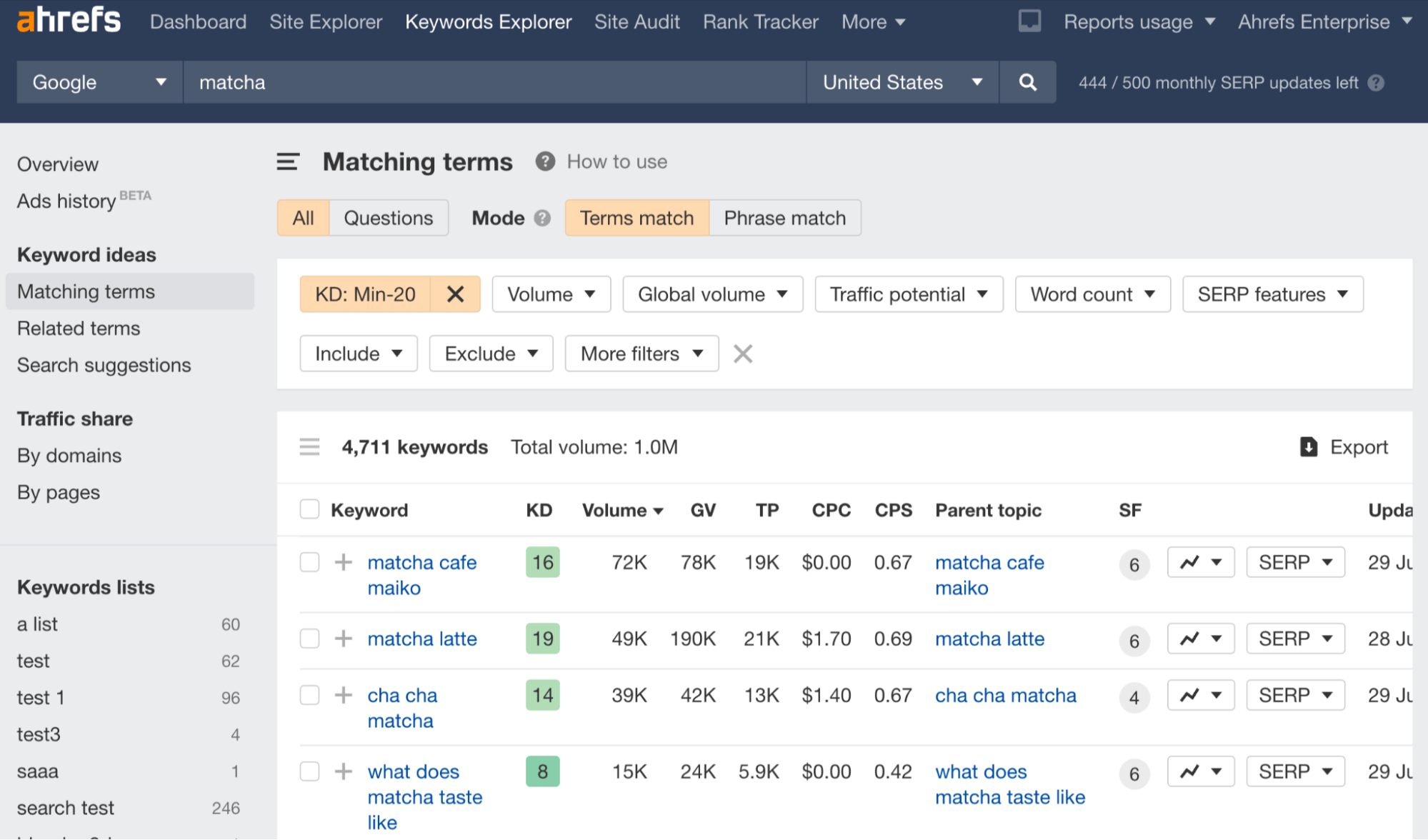 Keywords with KD lower than 20 based on the “matcha” seed keyword.
Keywords with KD lower than 20 based on the “matcha” seed keyword.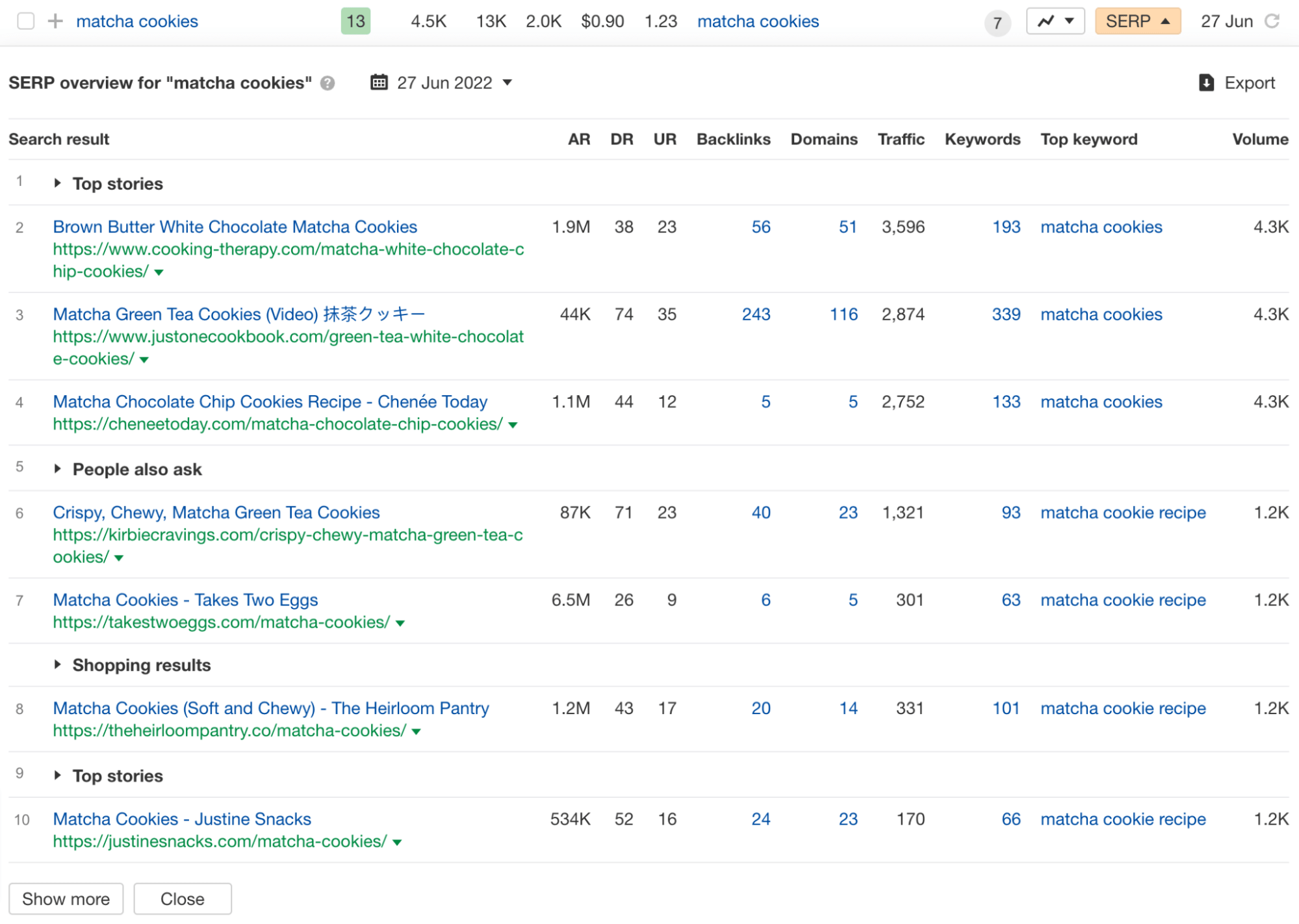 Example of a keyword with low KD and no “very strong” brands.
Example of a keyword with low KD and no “very strong” brands.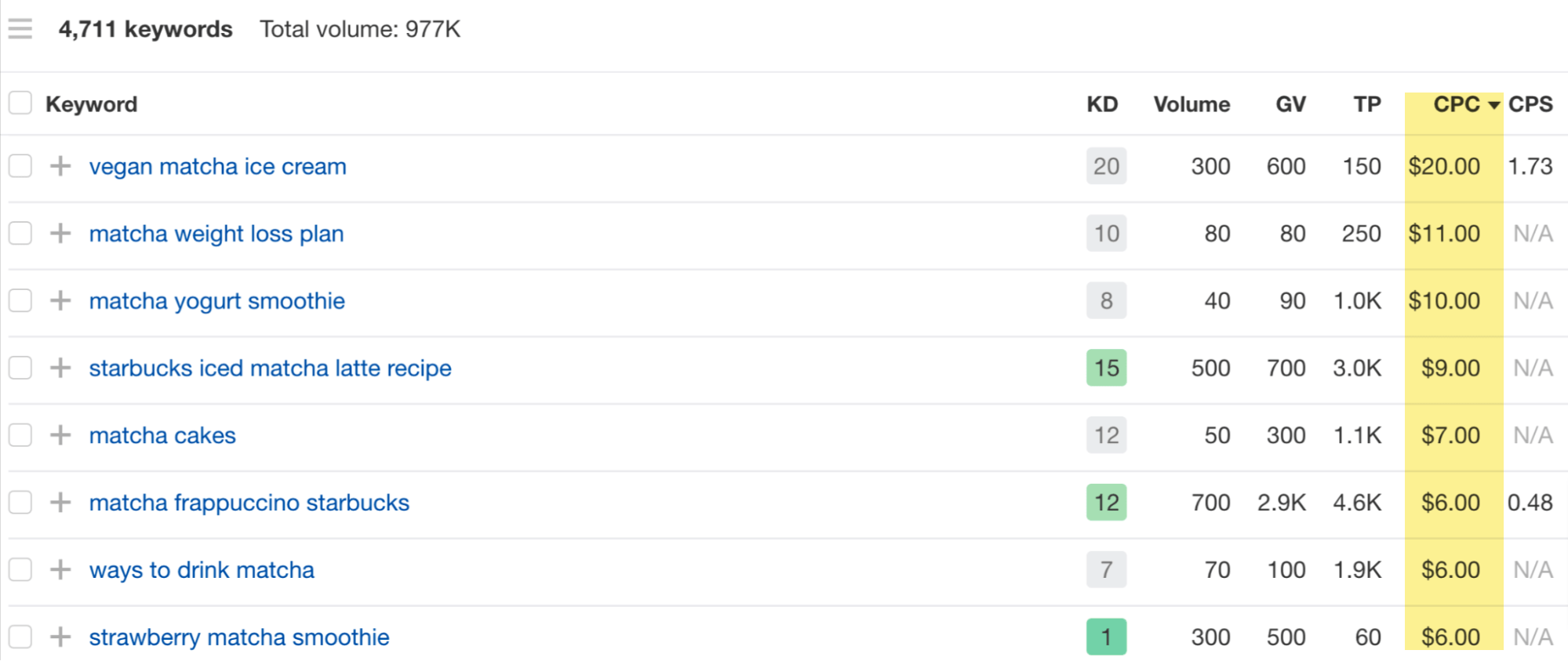
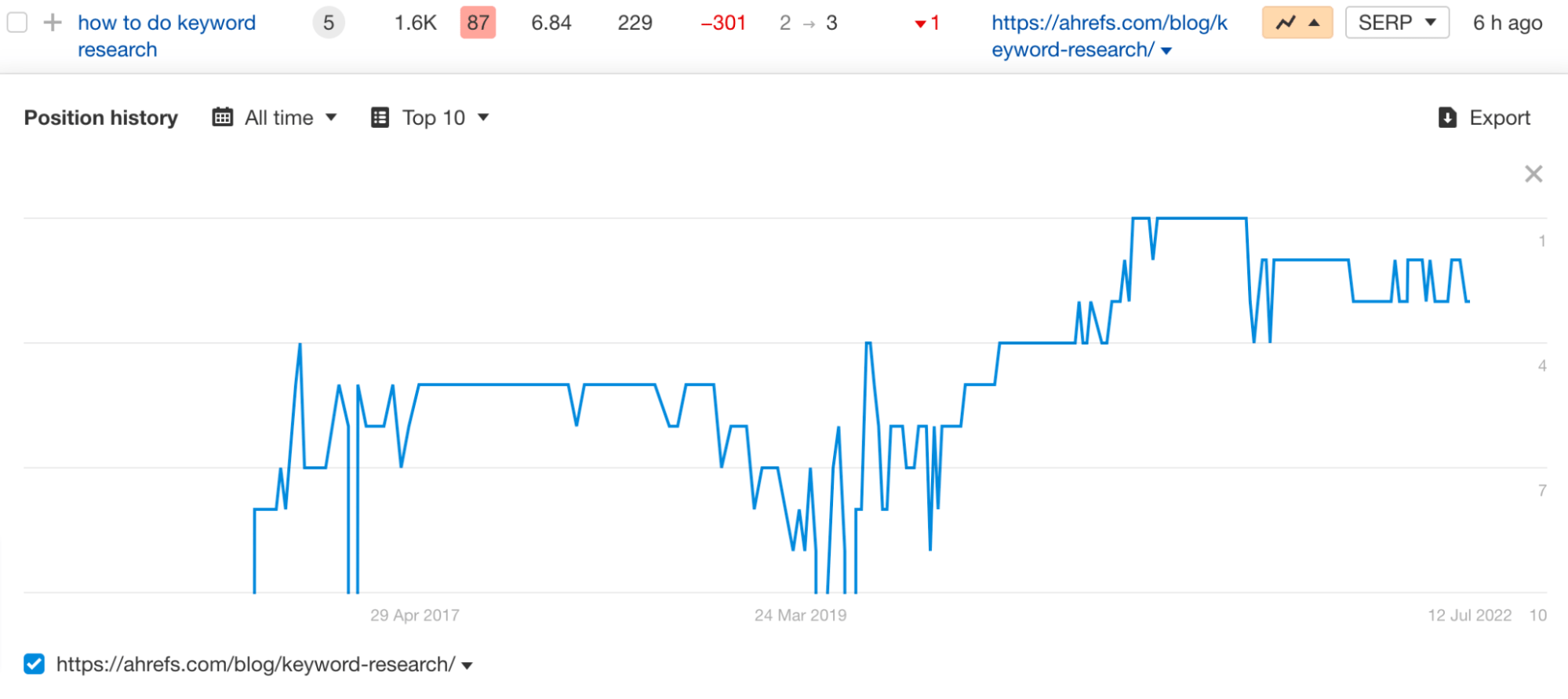 Despite many factors in favor of our article on keyword research, it reached #1 in the U.S. only after some four years of content updates and earning backlinks. Even then, it could not hold that position. KD 87 out of 100. Strong brands competing on the same keyword. Data via Ahrefs’ Site Explorer.
Despite many factors in favor of our article on keyword research, it reached #1 in the U.S. only after some four years of content updates and earning backlinks. Even then, it could not hold that position. KD 87 out of 100. Strong brands competing on the same keyword. Data via Ahrefs’ Site Explorer.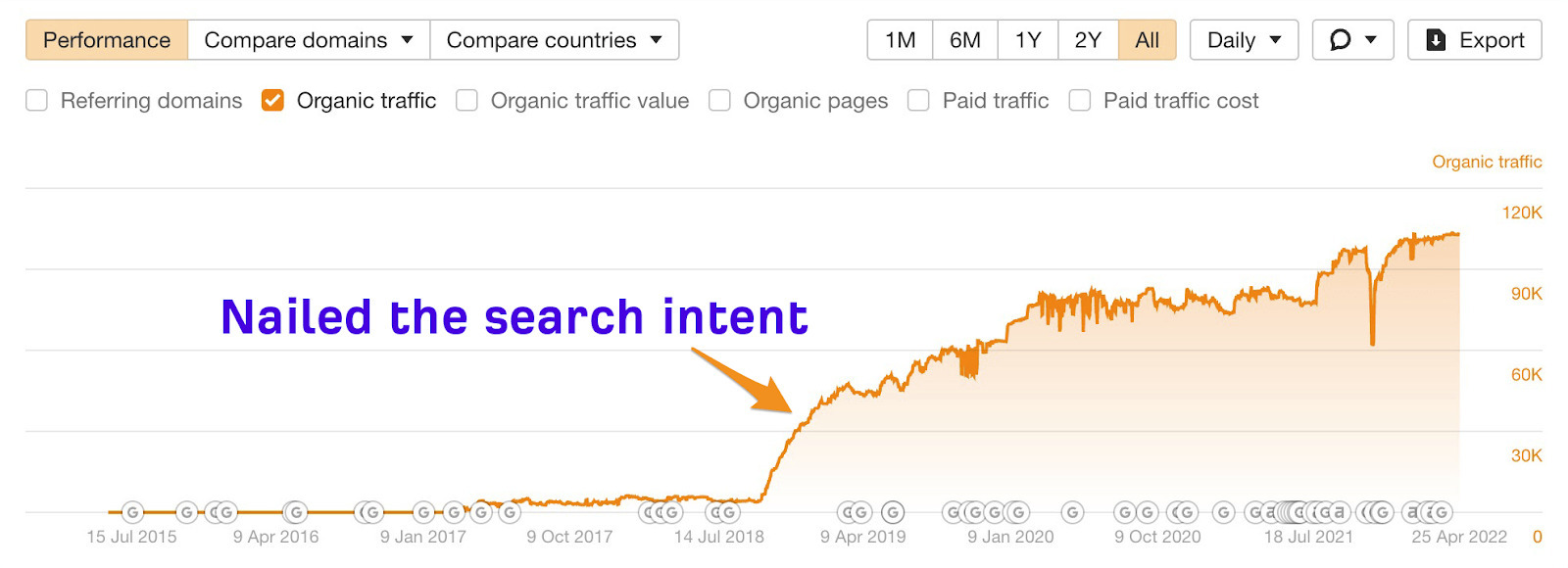 Here’s how organic traffic to one of our articles grew after we aligned with the search intent.
Here’s how organic traffic to one of our articles grew after we aligned with the search intent.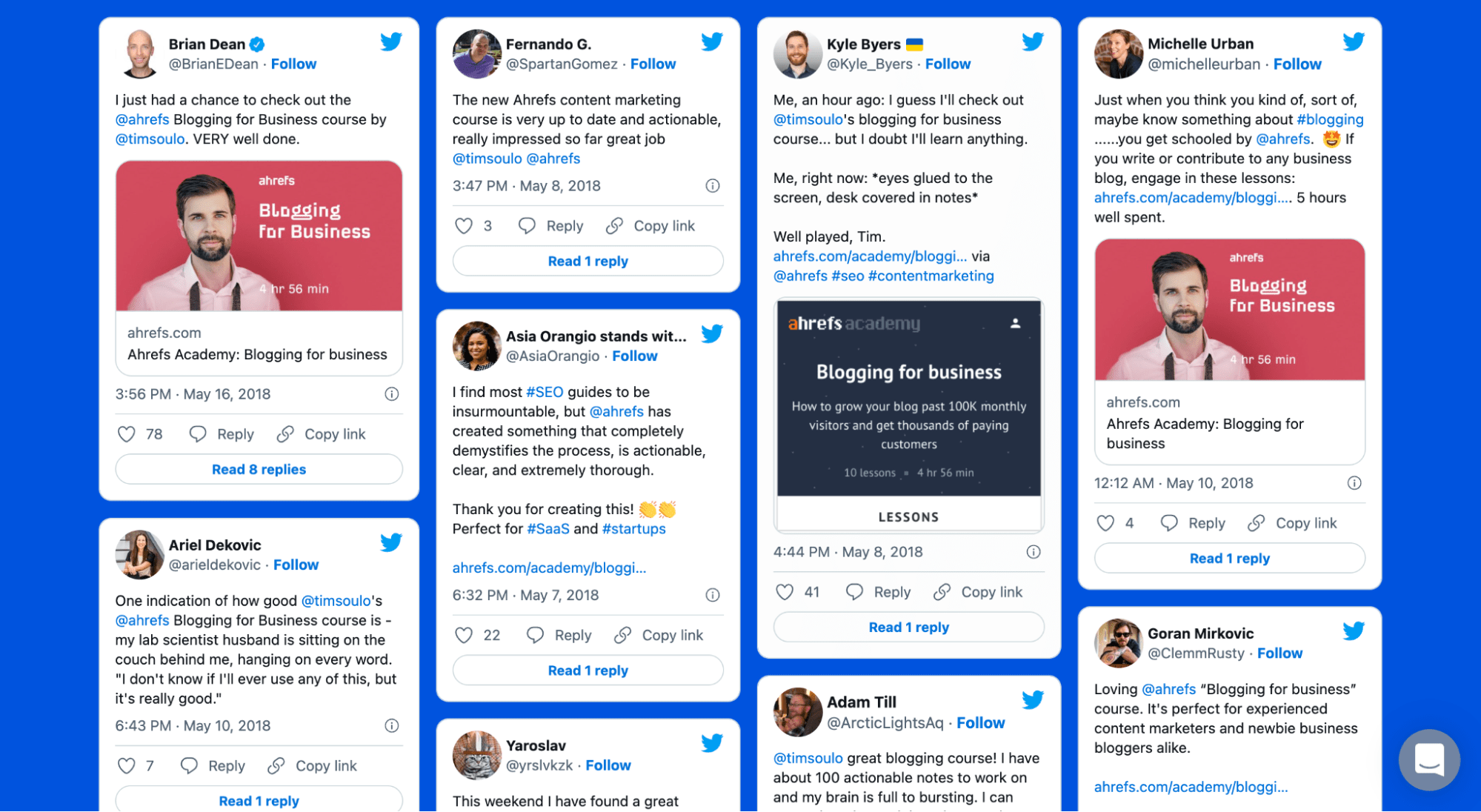 Actual user feedback for “Blogging for business,” our free video tutorial course on how to grow your blog past 100K monthly visitors.
Actual user feedback for “Blogging for business,” our free video tutorial course on how to grow your blog past 100K monthly visitors.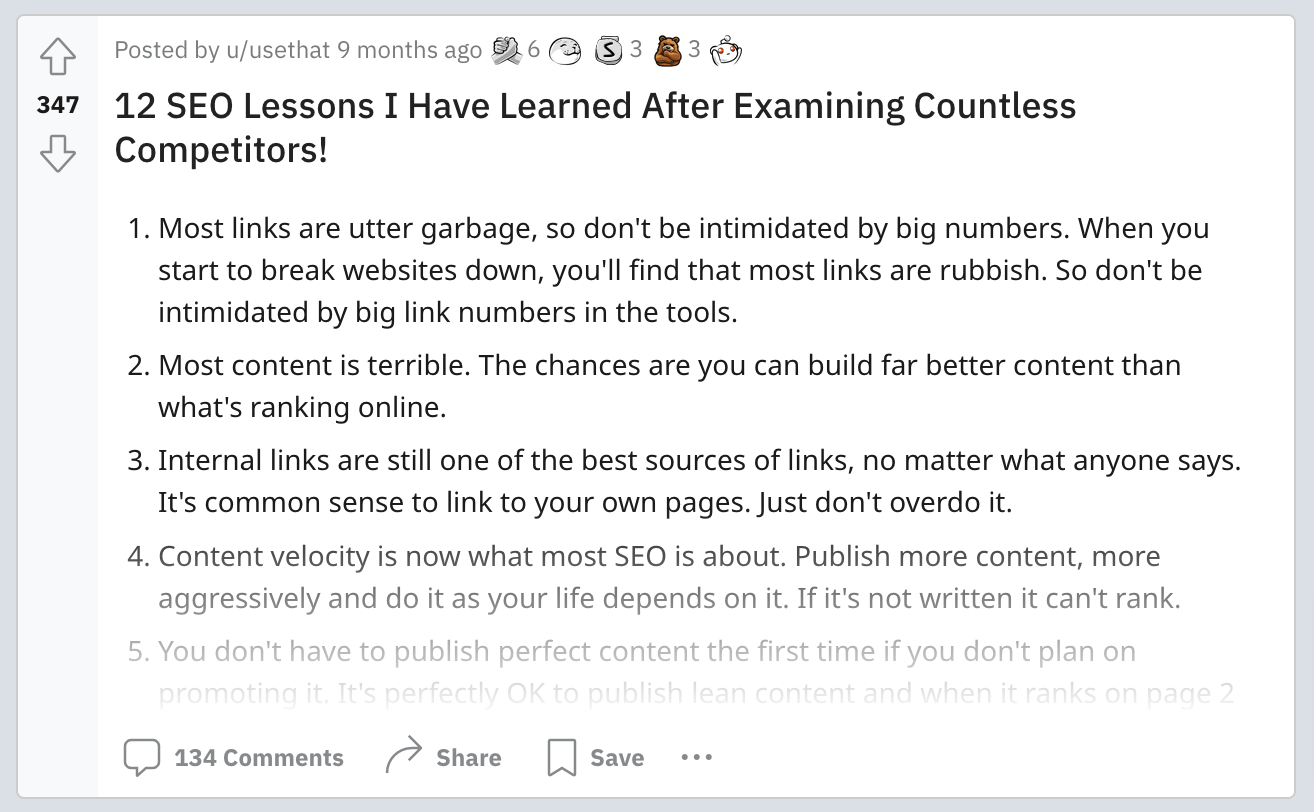


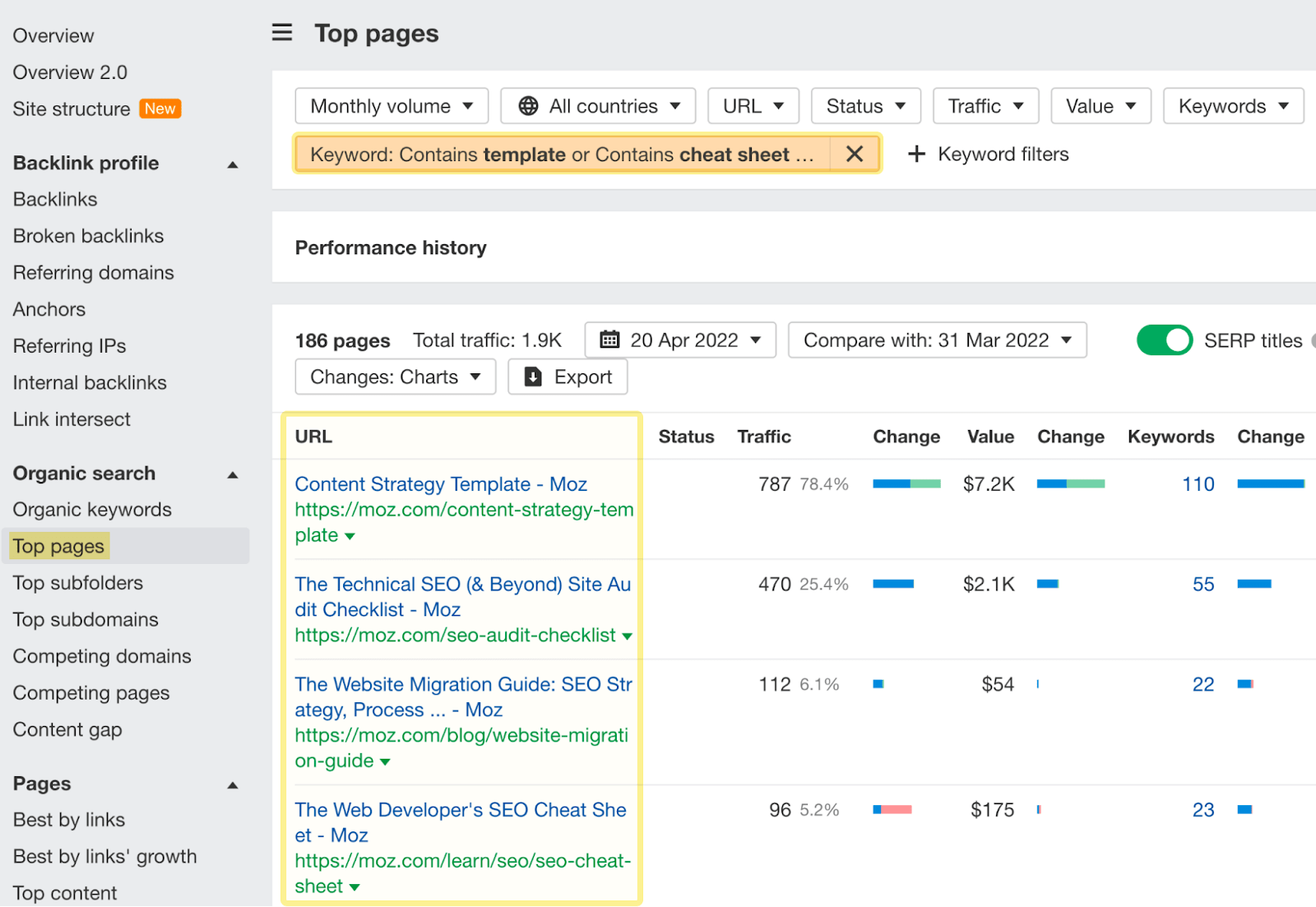 Top pages report in Ahrefs’ Site Explorer will uncover pages with the most organic traffic. You can also filter the results, as in the example above.
Top pages report in Ahrefs’ Site Explorer will uncover pages with the most organic traffic. You can also filter the results, as in the example above.

 Our article on influencer marketing was repurposed into a video and published on YouTube to reach even more people. Of course, it can work the other way around too.
Our article on influencer marketing was repurposed into a video and published on YouTube to reach even more people. Of course, it can work the other way around too. This is something we did with our guide on keyword research.
This is something we did with our guide on keyword research.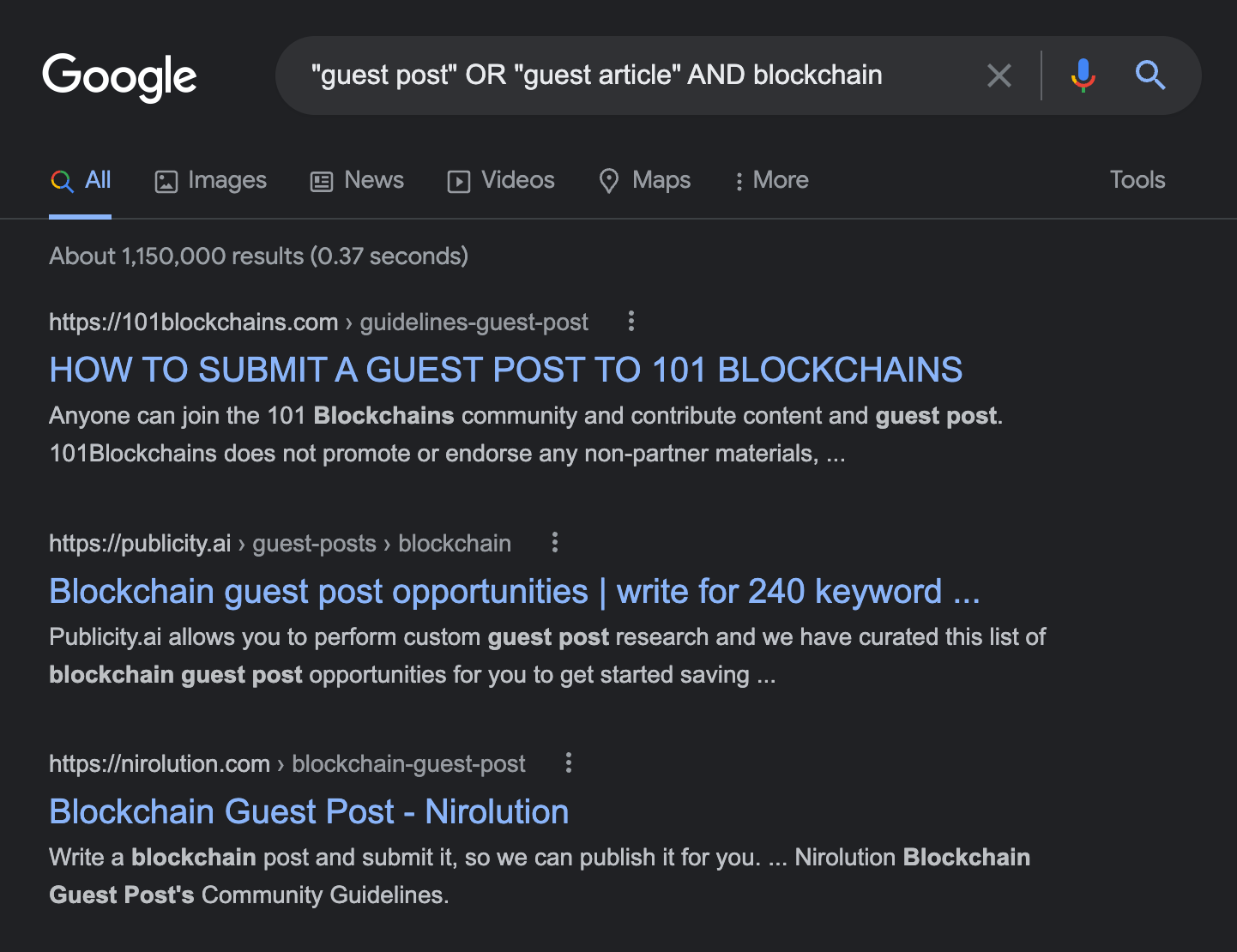
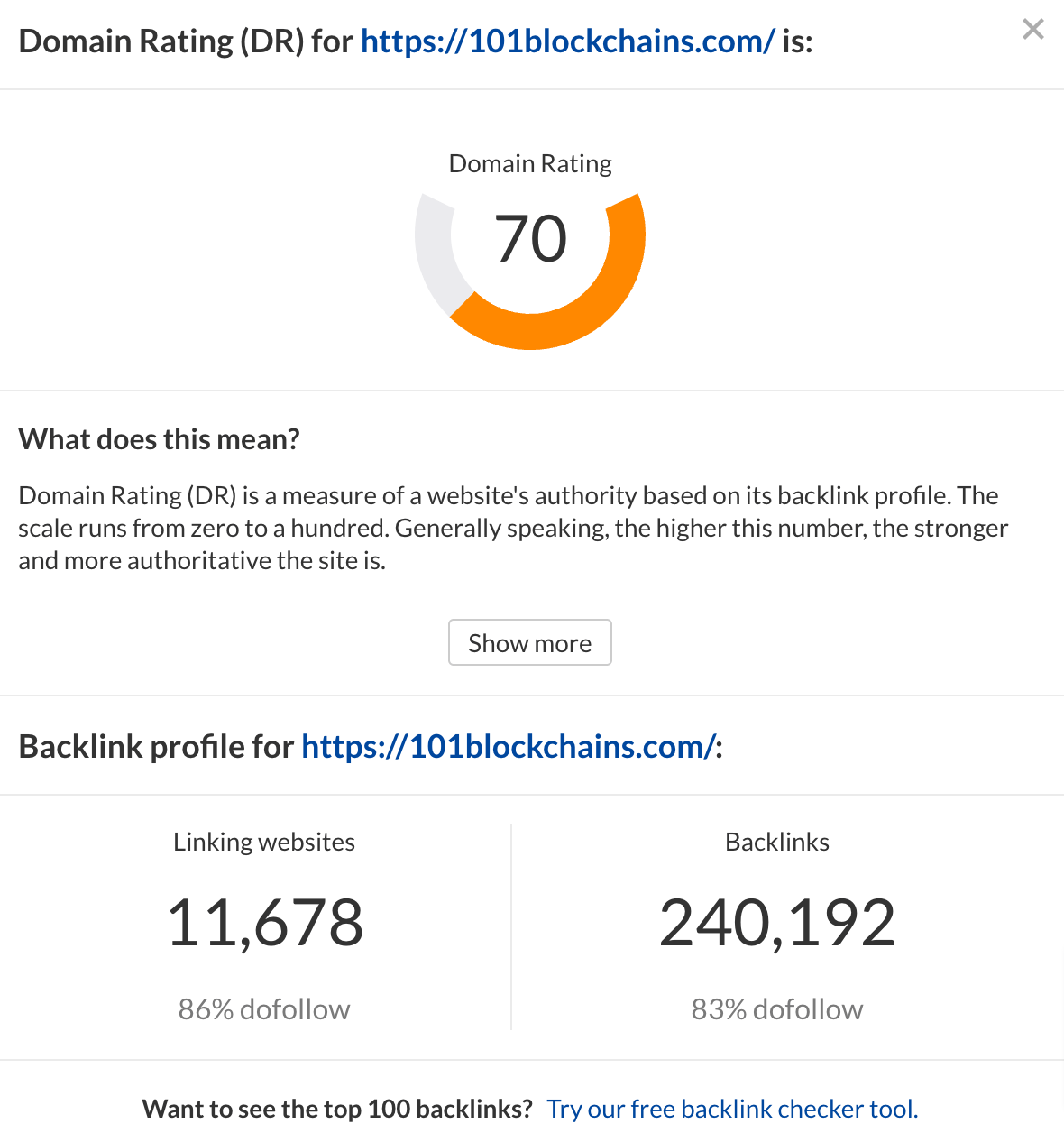

 Possible guest blogging opportunities filtered by DR and website traffic.
Possible guest blogging opportunities filtered by DR and website traffic.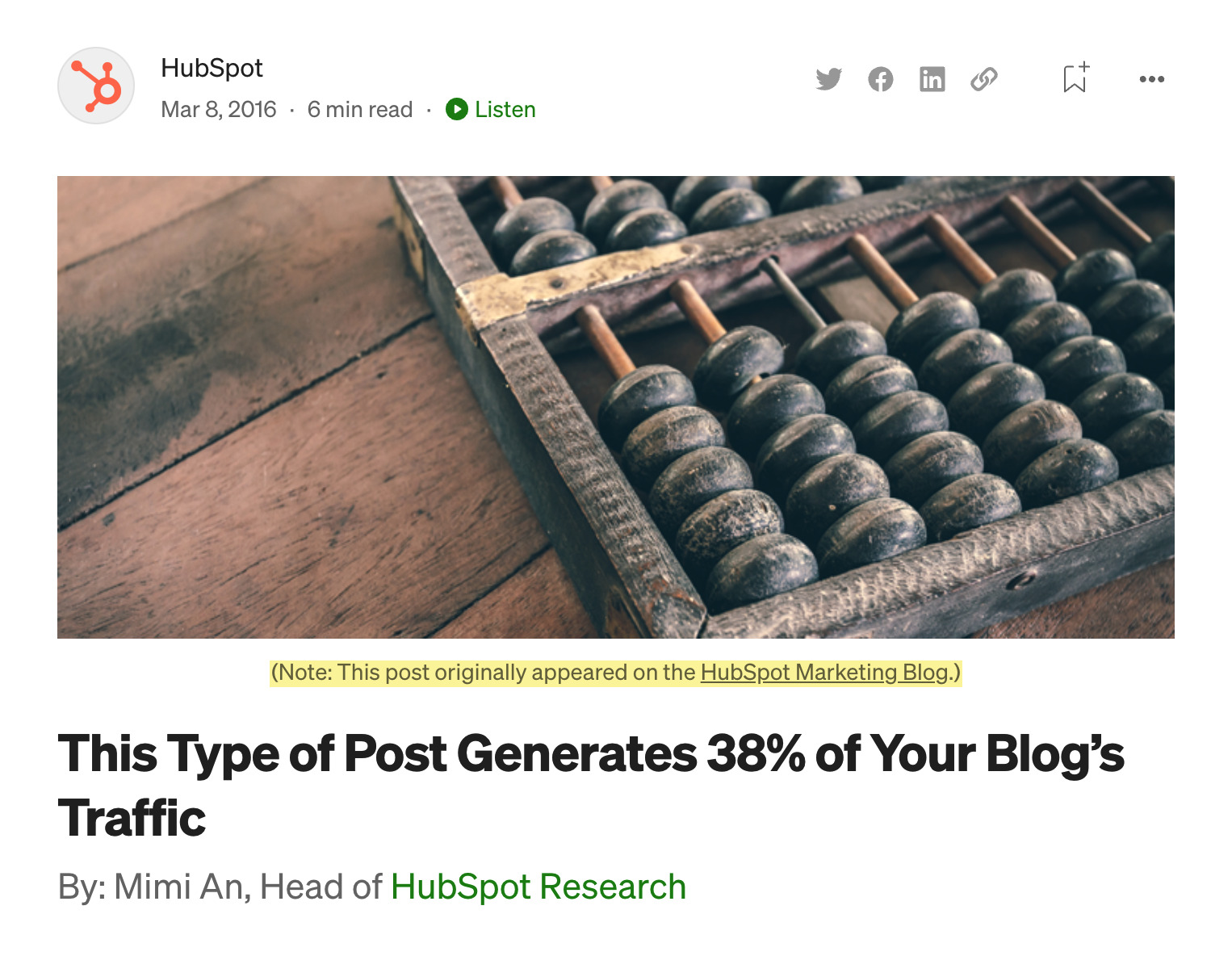
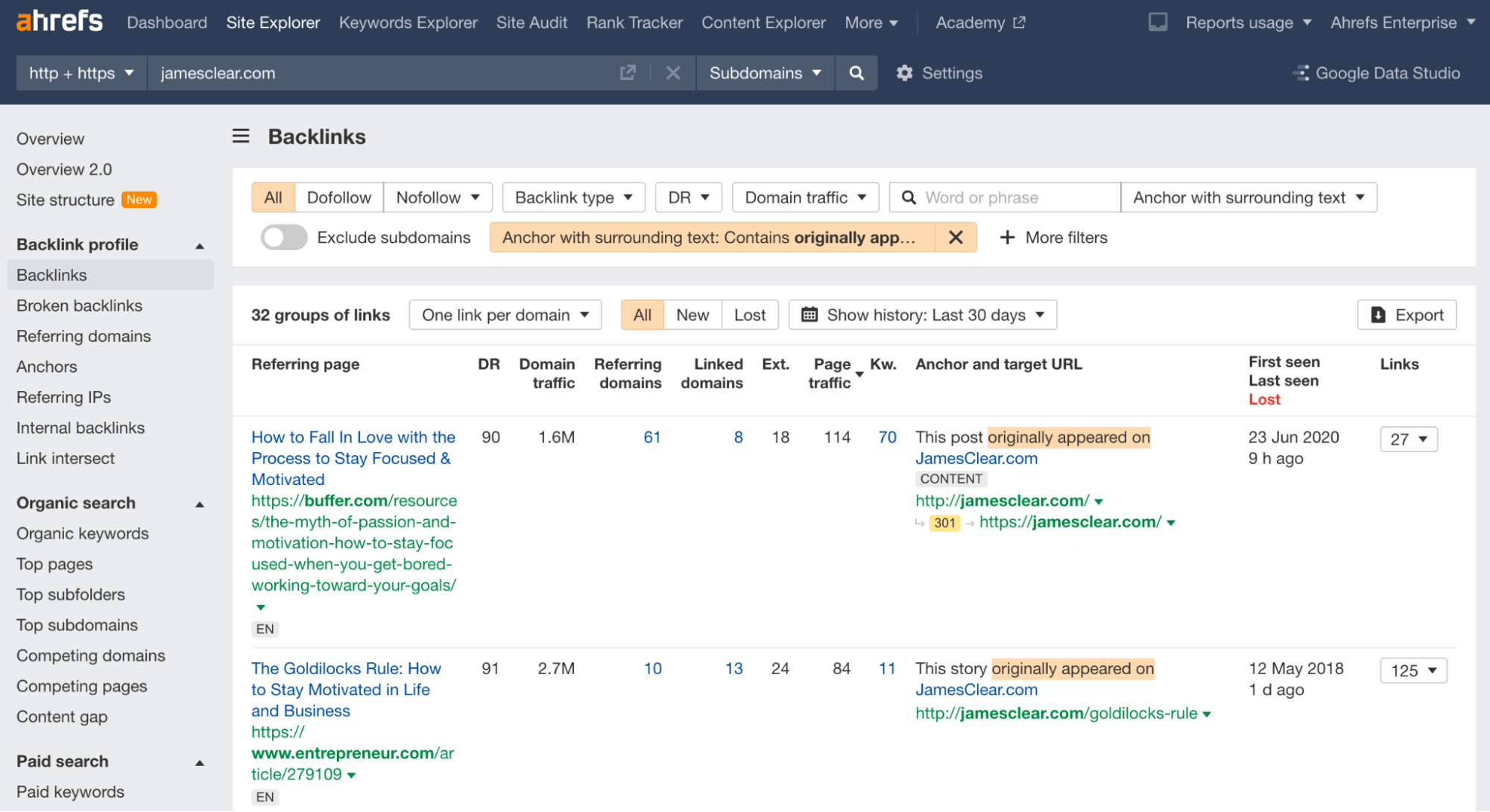
 Example: posting answers on Quora.
Example: posting answers on Quora.


 Marketing Solved is a popular marketing community run on Facebook. Note the highlight.
Marketing Solved is a popular marketing community run on Facebook. Note the highlight.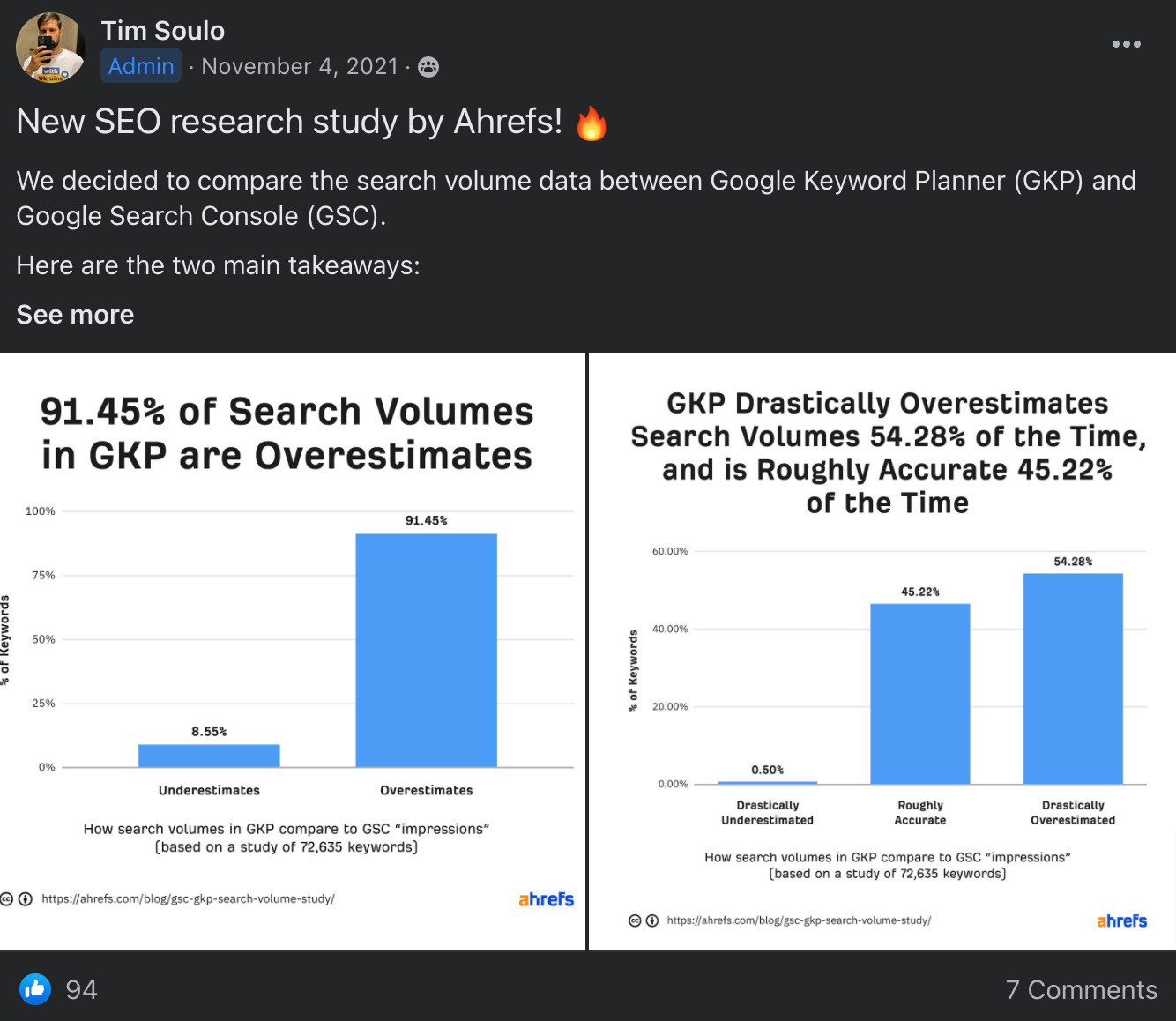
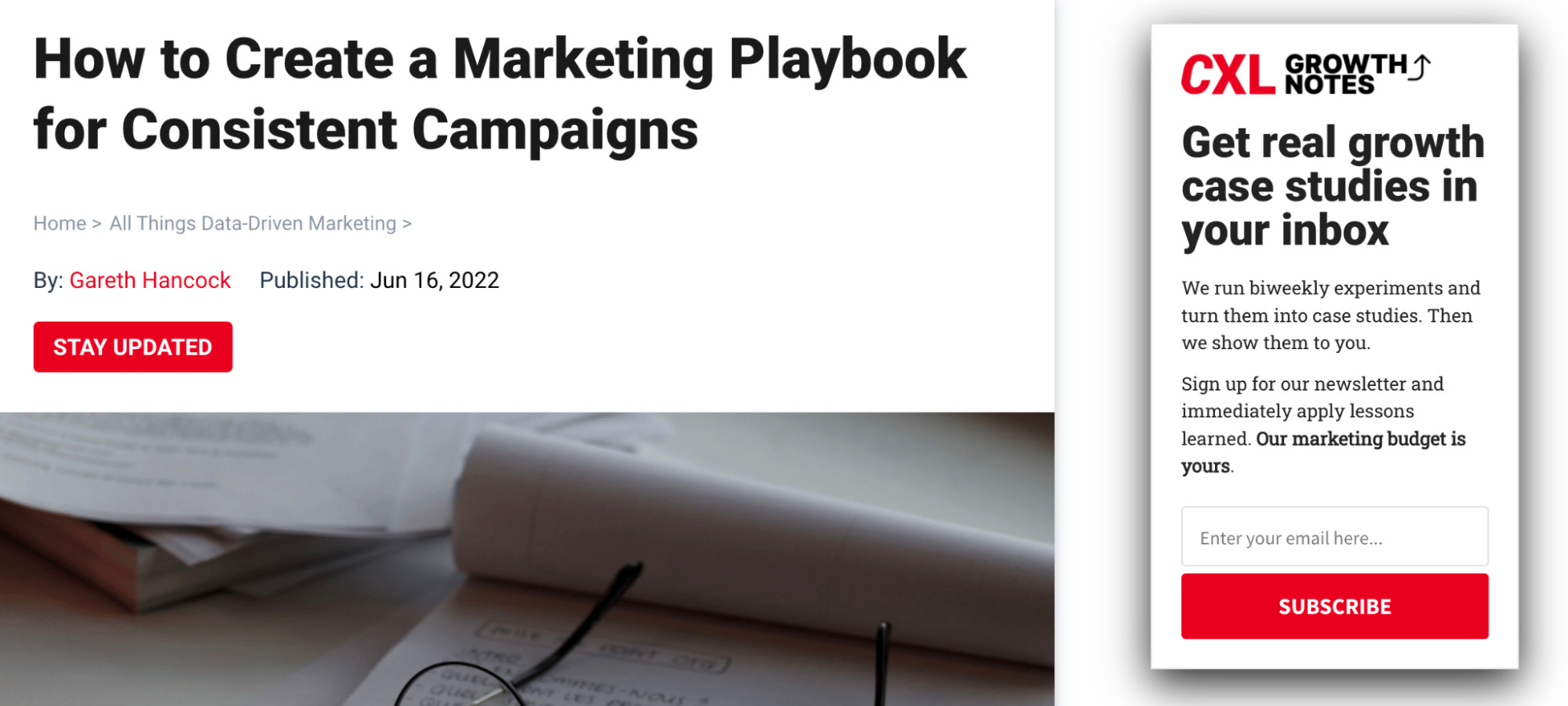
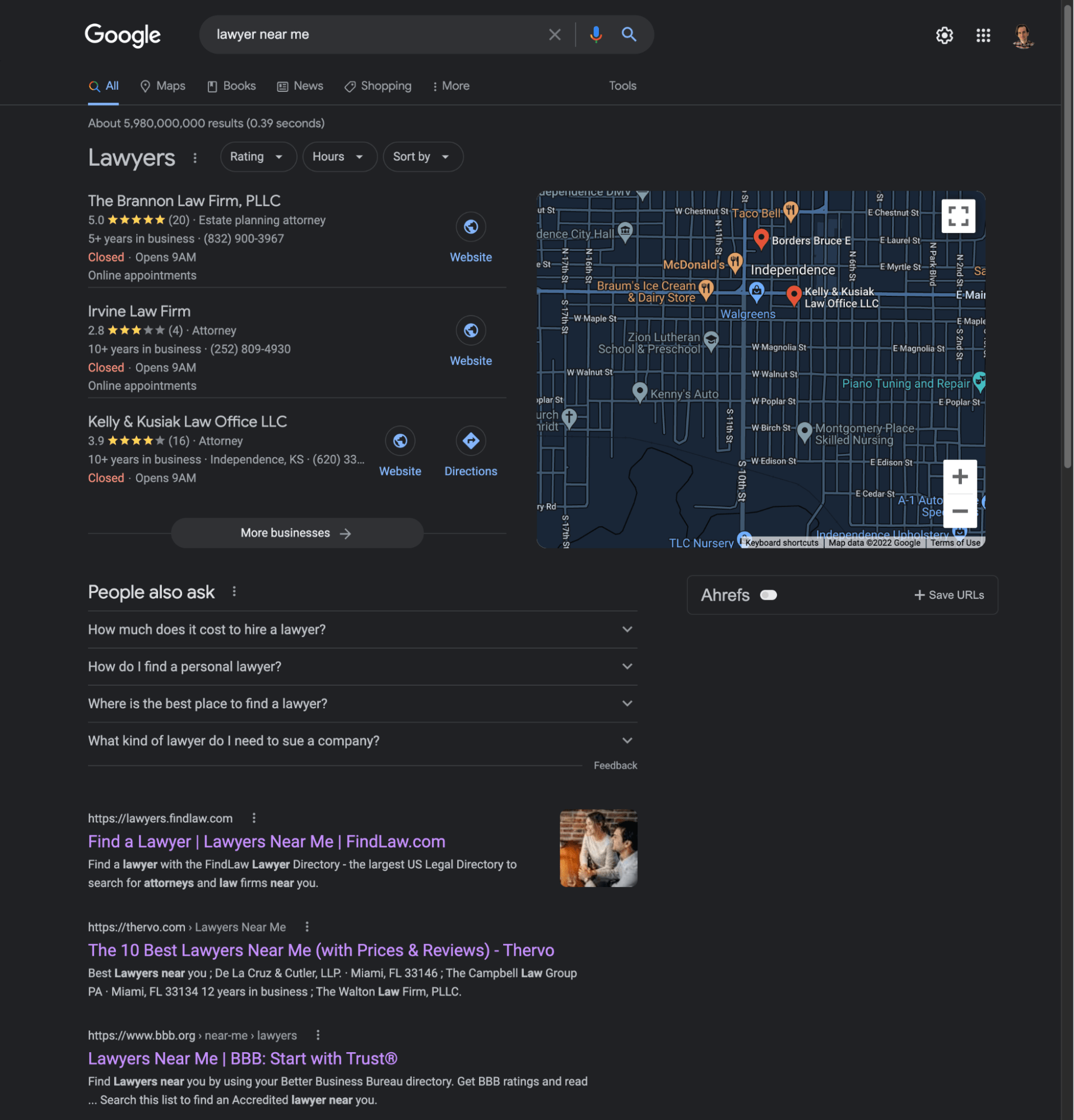 Looking for a lawyer via Google these days? Well, you will see mostly maps and links to directories.
Looking for a lawyer via Google these days? Well, you will see mostly maps and links to directories. Our study of 1 billion pages found a strong, positive correlation between the number of websites linking to a page and search traffic from Google.
Our study of 1 billion pages found a strong, positive correlation between the number of websites linking to a page and search traffic from Google.
 And now you know a reputable music industry attorney. All thanks to her commentary on an article about NFTs.
And now you know a reputable music industry attorney. All thanks to her commentary on an article about NFTs. Being featured in the press is usually a great opportunity for a high-DR link.
Being featured in the press is usually a great opportunity for a high-DR link.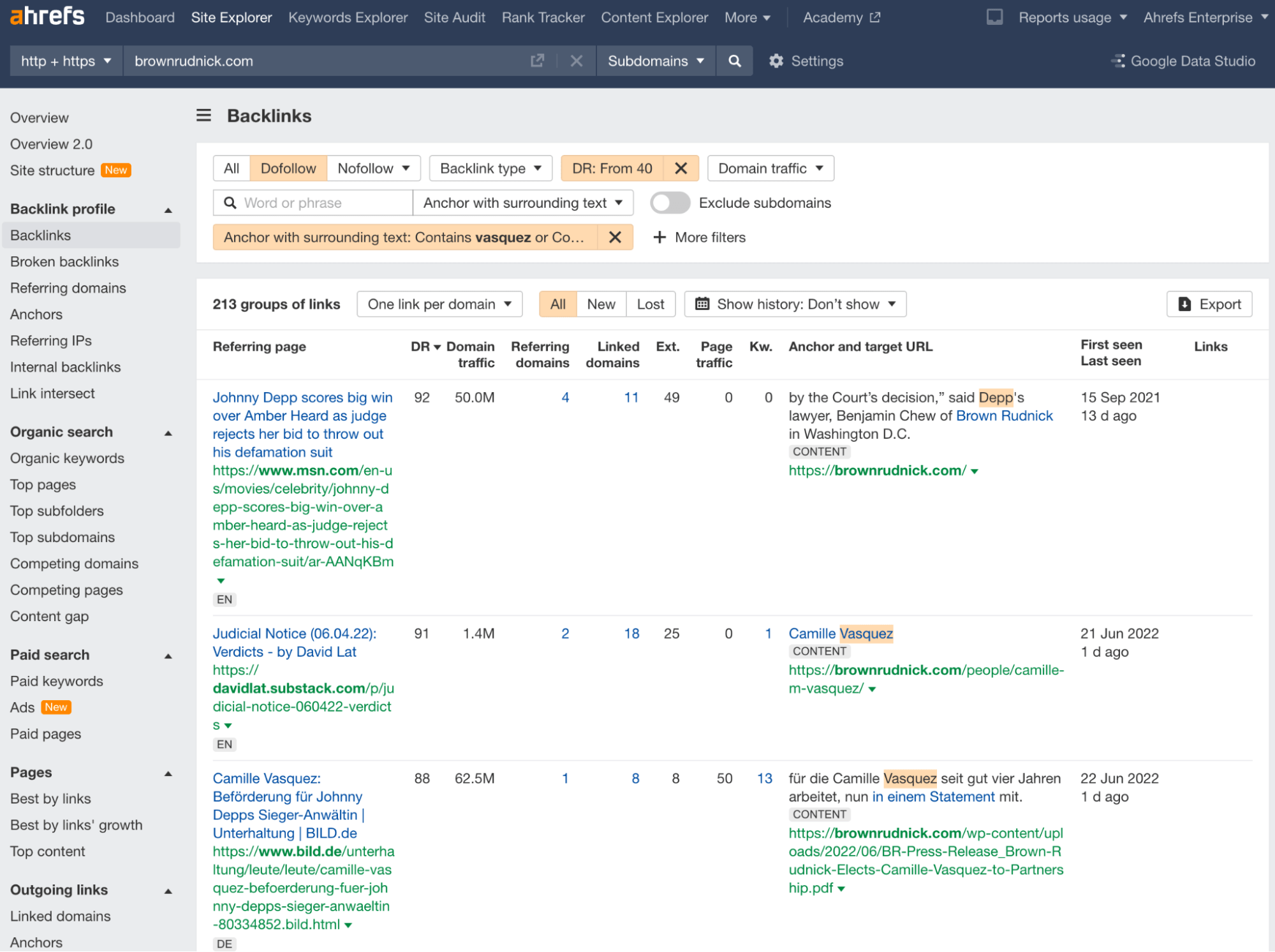 With the Backlinks report, you can easily filter your backlinks based on properties like DR, type of link, or the text inside the anchor and the surrounding text. In this example, we see links earned by a law firm from publicity around Johnny Depp’s recent trial.
With the Backlinks report, you can easily filter your backlinks based on properties like DR, type of link, or the text inside the anchor and the surrounding text. In this example, we see links earned by a law firm from publicity around Johnny Depp’s recent trial.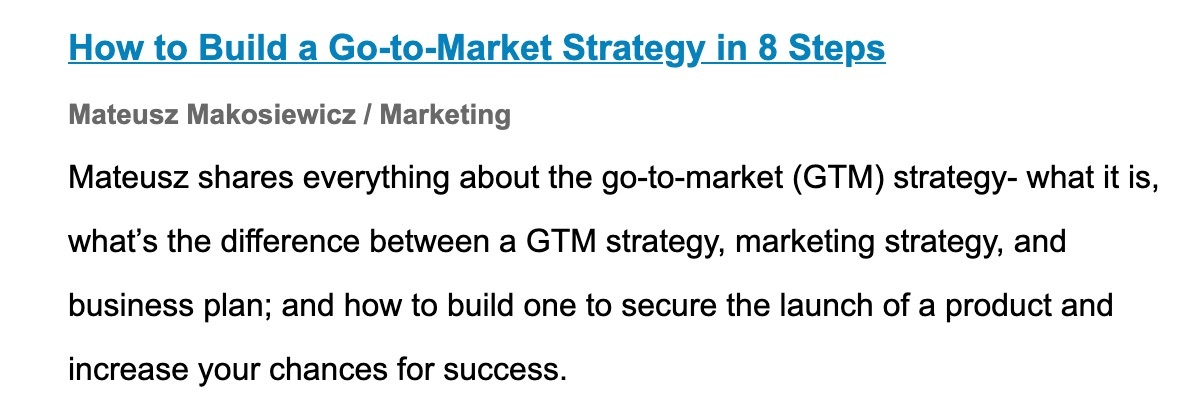 One of my articles featured in #SEOFOMO newsletter subscribed by +20K SEOs.
One of my articles featured in #SEOFOMO newsletter subscribed by +20K SEOs. You can use the same process as with any prospecting process explained in this article. Tip: use brackets to group multiple terms.
You can use the same process as with any prospecting process explained in this article. Tip: use brackets to group multiple terms.
Final thoughts

 ValVades
ValVades 












